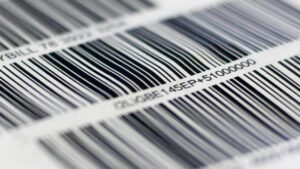A SYSTEM based on quick response (QR) codes which is set to replace line-based bar codes will undergo trials in the first quarter, the Philippine Retailers Association (PRA) said.
“By next year, we will trial the migration from the one-dimensional (1D) to two-dimensional (2D) bar code. The trial will be in the first quarter next year,” PRA President Roberto S. Claudio, Sr. told reporters on the sidelines of the 29th National Retail Conference & Expo in Pasay City last week.
“This is a big transition since this will make product distribution more efficient,” he added.
Mr. Claudio said the retail industry will lead the transition to the GS1 bar code system from the 1D black and white vertical lines to the QR code matrix 2D bar codes, which will be implemented worldwide by 2025.
“The new bar code will allow for better traceability and will be more consumer friendly. Consumers can now appreciate what products they are buying,” Mr. Claudio said.
Mr. Claudio said that both 1D and 2D barcodes will be used in products for the first two years of implementation to allow a transition period for retailers and manufacturers.
He added that retailers will need new scanners to read the new bar codes.
“The new scanners can read both 1D and 2D barcodes so that whatever is there, it will be read,” Mr. Claudio said.
“From what I’ve heard, half of the supermarkets are now using scanners that can read both bar codes…,” he added.
Among the other benefits of the QR-based system, Mr. Claudio said that consumers will have more information available about the products they will purchase.
“The new bar code will display calorie count, nutritional value, etc. In essence, the QR code gives more information compared to the black and white straight-line bar code,” Mr. Claudio said.
“The QR bar codes will also have links that will lead you to the website of the manufacturer, as well as links to recipes,” he added.
Mr. Claudio said one of the challenges in implementing the new bar code system is the added cost to be borne by micro, small, and medium enterprises (MSMEs).
“The challenge is the MSMEs. It will be an added cost, but it will only be a small amount. The cottage industries like those making jams, bagoong, and pastillas in the provinces don’t have barcodes,” Mr. Claudio said. — Revin Mikhael D. Ochave

